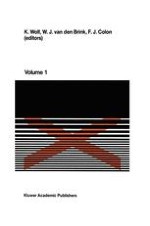
1988 | OriginalPaper | Buchkapitel
Use of Fluorescing Agents to Study Actual and Apparent Petroleum Thicknesses in Laboratory Columns
verfasst von : Jack D. Milligan
Erschienen in: Contaminated Soil ’88
Verlag: Springer Netherlands
Enthalten in: Professional Book Archive
Aktivieren Sie unsere intelligente Suche, um passende Fachinhalte oder Patente zu finden.
Wählen Sie Textabschnitte aus um mit Künstlicher Intelligenz passenden Patente zu finden. powered by
Markieren Sie Textabschnitte, um KI-gestützt weitere passende Inhalte zu finden. powered by
The presence and thickness of petroleum products in groundwater monitoring wells has been used to delineate areas of contamination and to estimate the volume of contaminant by nearly everyone involved with the cleanup of petroleum-contaminated groundwater. However, as long ago as 1967 when J. Van Dam1 theorized on the migration of hydrocarbons in groundwater, it has been suspected that petroleum thickness in monitoring wells (“apparent” thickness) was not representative of the “actual” thickness on the water table. The existence of the water-bearing capillary fringe that occurs at the surface of the groundwater table was postulated by Williams and Wilder2 to effectuate the discrepancy between “actual” and “apparent” petroleum thickness in their 1971 case study. More current publications by Yaniga and Warburton3, and Blake and Hall4 have helped make the capillary fringe’s effect on apparent petroleum thickness a generally accepted phenomena. However, visual proof concomitant with quantitative information has heretofore been very sparce or nonexistent.